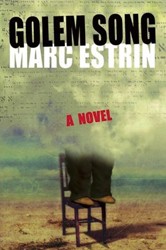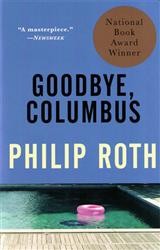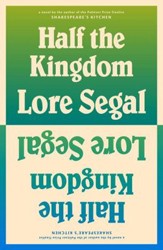Daniel Levin’s first novel is a fast-paced historical adventure that takes us through the span of Jewish history from the Bible through today as the characters try to solve the riddle of the whereabouts of the fabled Tabernacle Menorah. This priceless artifact, which was stolen from the Temple in Jerusalem and is depicted on the Arch of Titus in Rome, has been missing for 2000 years. The search for it involves following clues left as hidden messages in ancient Rome and Jerusalem by Flavius Josephus, Titus’ historian. The author posits that Josephus, a Jew who rose from prisoner of war to trusted public relations man for Titus, was a double agent whose deceptions cause difficulties for modern archaeologists. Jonathan Marcus, a lawyer and former classics scholar, and Dr. Emili Travia, an antiquities preservationist, combine their talents to chase after the ancient Jewish artifact. Meanwhile, Sheik Salah ad-Din, alias for an evil archaeologist, is also pursuing the menorah while trying to obliterate all Jewish and Christian archaeological ties to the Land of Israel. He is part of the Waqf, the secretive Islamic land trust that has had full control of the Temple Mount in Jerusalem for 800 years. This story includes action, conspiracy, and romance while educating the reader about current events and the importance of protecting our legacy. What more could you want in a book?
More on The Last Ember…
by Miriam Bradman Abrahams
Meeting Daniel Levin could have been an intimidating experience; after all, his resume is quite impressive, he is a graduate with honors of Harvard Law School, a scholar of Roman and Greek civilizations, and his first book is already a New York Times bestseller. But when we met for this interview I found him to be charming, patient, and eager to answer all my questions. Levin has practiced international law, has clerked for the Chief Justice of the Supreme Court of Israel, and was a visiting scholar at the American Academy in Rome. He is proficient in Latin, Hebrew, Spanish, Italian, and Greek. Levin has brought all this experience and his passion for Jewish history and heritage into this exciting first book, The Last Ember.
The story is about the fast paced search for the ancient Tabernacle Menorah, which was stolen from the Temple in Jerusalem when the Romans sacked the city two thousand years ago. Jonathan Marcus, a former classics scholar, and Emili Travia, an antiquities preservationist, are hunting for clues hidden in artifacts and manuscripts. The holy object is also sought after by Salah ad-Din, a mysterious archaeologist who has been digging illegally under the Temple Mount and purposefully discarding archaeological treasures sacred to both Jews and Christians. The tale touches upon nearly all of Jewish history as the characters explore ancient and modern Rome and Jerusalem. The depth of Levin’s story is breathtaking and his passion for his subject is contagious.
The author says he created the concept of Josephus as a double agent. A Jewish captive of the Romans whose survival defied logic, Josephus rose up to become historian to the Emperor Titus. Although his credibility is questioned, Josephus’ writings have provided critical information about that period. Levin begins with Josephus’ quote “Historians are forgers” and posits that Josephus forged in order to tell the truth, and rather than being a traitor, he left hidden clues to enable future generations of the Jewish community to find the Tabernacle Menorah. His theory is supported by the many ambiguities that have troubled scholars for the past 500 years.
It was a case Levin heard at the Israeli Supreme Court that sparked his interest in historical revisionism. The Israel Antiquities Authority brought in a case against the Waqf, a secretive Islamic land trust that has administered the Temple Mount in Jerusalem for 800 years. They were accused of unauthorized digging and dumping of 20,000 tons of archaeologically rich soil. Levin, who calls this “archaeological terrorism,” wants readers to know his book is not simply a spy novel but is dealing with a very difficult idea. He says Jewish history is fragile as fire and people are trying to snuff it out. He needs the heroism of the reader to keep it aflame by reacting with words. Elie Wiesel says his book is a much-needed literary protest against ancient and modern revisionism. Levin underlined the significance of preserving heritage with an anecdote: on visits to different ruins for his research, he observed families strolling about, children enjoying ice creams, etc… and remembered a quote by the ancient Roman poet Horace “we tread on the thin crust of ashes.”
The book’s many poignant references make the story come to life. Mose Orvieti is an important character, partially based on Angelo Pavoncello, a Holocaust survivor who once lived in the Synagogue in Rome and gave Levin a tour of the Ghetto. Mose, who lost all his family in the Shoah, is determined to see the menorah and the continued legacy of its flame. Salah ad-Din’s cousin, Ramat Mansour, is a devout Moslem who believes in honoring the past and preserving artifacts of all religions. He is vehemently against the defilement being perpetrated by his cousin. Levin points out that there is a distinction between a passion for religion and ethics versus “archaeological politics” and revisionism. Levin acknowledges an anonymous member of the Waqf authority who guided him around the Temple Mount with integrity despite fear of possible consequences.
Levin is a disciplined writer, beginning by 5:30 am and working 10 hours a day in his home. [He excitedly claims to have written the rare spy story taking place in West Jerusalem.] He spent three years working on this book, part of it at the American Academy of Rome where he had valuable resources at his fingertips, the company of other scholars, and an inspiring setting. Levin credits his mother’s storytelling for much of his Jewish knowledge and has dedicated this book to her. He looks up to his father for his encouragement and the unwavering belief he has in his son. He also names Raoul Wallenberg as a great hero. Levin’s favorite books are John Le Carre’s The Spy Who Came in from the Cold and Umberto Eco’s Foucault’s Pendulum. The launch celebration for The Last Ember was held at Sotheby’s, the setting where protagonist Jonathan Marcus had been relegated to clerical duties after his expulsion from the American Academy in Rome. Levin is well into his second book, which also features Jonathan Marcus, “whose work is not done.” His website www.daniellevin.com, includes information about protecting the past in locations around the world. Levin looks forward to his JBC Network speaking tour across the country this November.
Miriam Bradman Abrahams, mom, grandmom, avid reader, sometime writer, born in Havana, raised in Brooklyn, residing in Long Beach on Long Island. Longtime former One Region One Book chair and JBC liaison for Nassau Hadassah, currently presenting Incident at San Miguel with author AJ Sidransky who wrote the historical fiction based on her Cuban Jewish refugee family’s experiences during the revolution. Fluent in Spanish and Hebrew, certified hatha yoga instructor.





